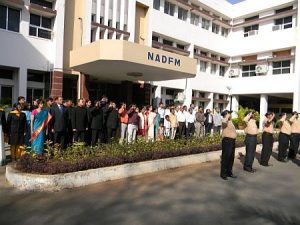The organisational history of the Income-tax Department starts in the year 1922. The Income-tax Act, 1922, gave, for the first time, a specific nomenclature to various Income-tax authorities.
(nomenclature – choosing of names for things)
The foundation of a proper system of administration was thus laid.
In 1924, Central Board of Revenue Act constituted the Board as a statutory body with functional responsibilities for the administration of the Income-tax Act. Commissioners of Income- tax were appointed separately for each province and Assistant Commissioners and Income-tax Officers were provided under their control.
The amendments to the Income tax Act, in 1939, made two vital structural changes:
(i) appellate functions were separated from administrative functions; a class of officers, known as Appellate Assistant Commissioners, thus came into existence, and
(ii) a central charge was created in Bombay. In 1940, with a view to exercising effective control over the progress and inspection of the work of Income-tax Department throughout India, the very first attached office of the Board, called Directorate of Inspection (Income Tax) – was created. As a result of separation of executive and judicial functions, in 1941, the Appellate Tribunal came into existence. In the same year, a central charge was created in Calcutta also.
World War II brought unusual profits to businessmen. During 1940 to 1947, Excess Profits Tax and Business Profits Tax were introduced and their administration handed over to the Department
As indicated earlier, in 1946, for the first time a few Group A officers were recruited in the department. Training them was important. The new recruits were sent to Bombay and Calcutta where they were trained, though not in an organised manner. In 1957, I.R.S. (Direct Taxes) Staff College started functioning in Nagpur. Today this attached office of the Board functions under a Director-General. It is called the National Academy of Direct Taxes. By 1963, the I.T. department, burdened with the administration of several other Acts like W.T., G.T., E.D., etc., had expanded to such an extent that it was considered necessary to put it under a separate Board. Consequently, the Central Board of Revenue Act, 1963 was passed. The Central Board of Direct Taxes was constituted, under this Act
A very important administrative change occurred during this period. The recovery of arrears of tax which till 1970 was the function of State authorities was passed on to the departmental officers. A whole new wing of Officers – Tax Recovery Officers was created and a new cadre of post of Tax Recovery Commissioners was introduced w.e.f. 1-1-1972.
In order to improve the quality of work, in 1977, a new cadre known as IAC (Assessment) and in 1978 another cadre known as CIT (Appeals) were created. The Commissioners’ cadre was further reorganised and five posts of Chief Commissioners (Administration) were created in 1981.
Computerisation in the Income-tax Department started with the setting up of the Directorate of Income tax (Systems) in 1981. Initially computerisation of processing of challans was taken up. For this 3 computer centres were first set up in 1984-85 in metropolitan cities using SN-73 systems. This was later extended to 33 major cities by 1989. The computerized activities were subsequently extended to allotment of PAN under the old series, allotment of TAN, and pay roll accounting. These computer centres used batch process with dumb terminals for data entry.
In 1993 a Working Group was set up by the Government to recommend computerisation of the department. Based on the report of the Working Group a comprehensive computerisation plan was approved by the Government in October, 1993. In pursuance of this, Regional Computer Centres were set up in Delhi, Mumbai, and Chennai in 1994-95 with RS6000/59H Servers. PCs were first provided to officers in these cities in phases. The Plan involved networking of all users on LAN/WAN. Network with leased data circuits were accordingly set up in Delhi, Mumbai and Chennai in Phase-I during 1995-96. A National Computer Centre was set up at Delhi in 1996-97. Integrated application software were developed and deployed during 1997-99. Thereafter, RS6000 type mid range servers were provided in the other 33 Computer Centres in various major cities in 1996-97. These were connected to the National Computer Centre through leased lines. PCs were provided to officers of different level upto ITOs in stages between 1997 and 1999. In phase II offices in 57 cities were brought on the network and linked to RCCs and NCC.

Leave a Reply